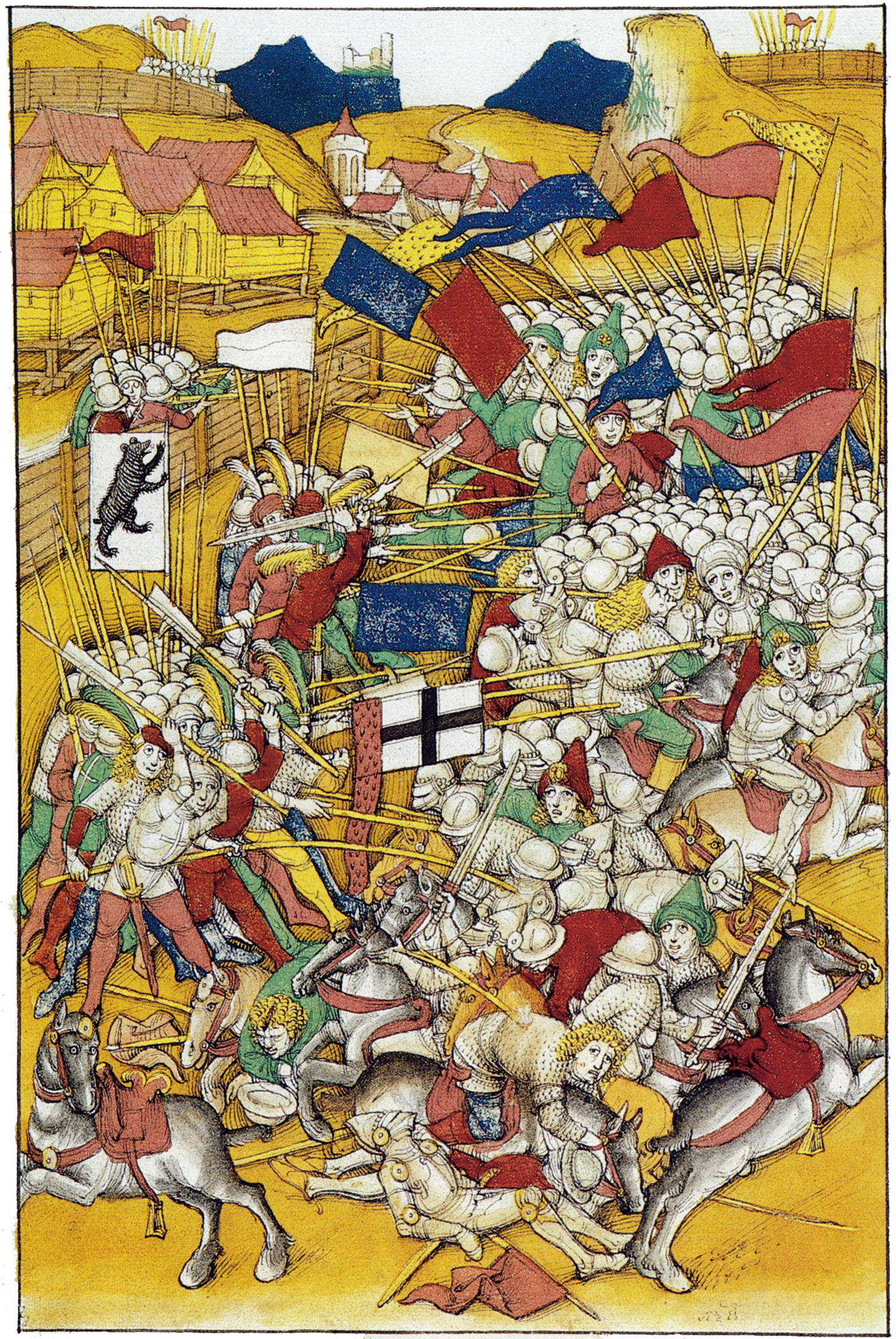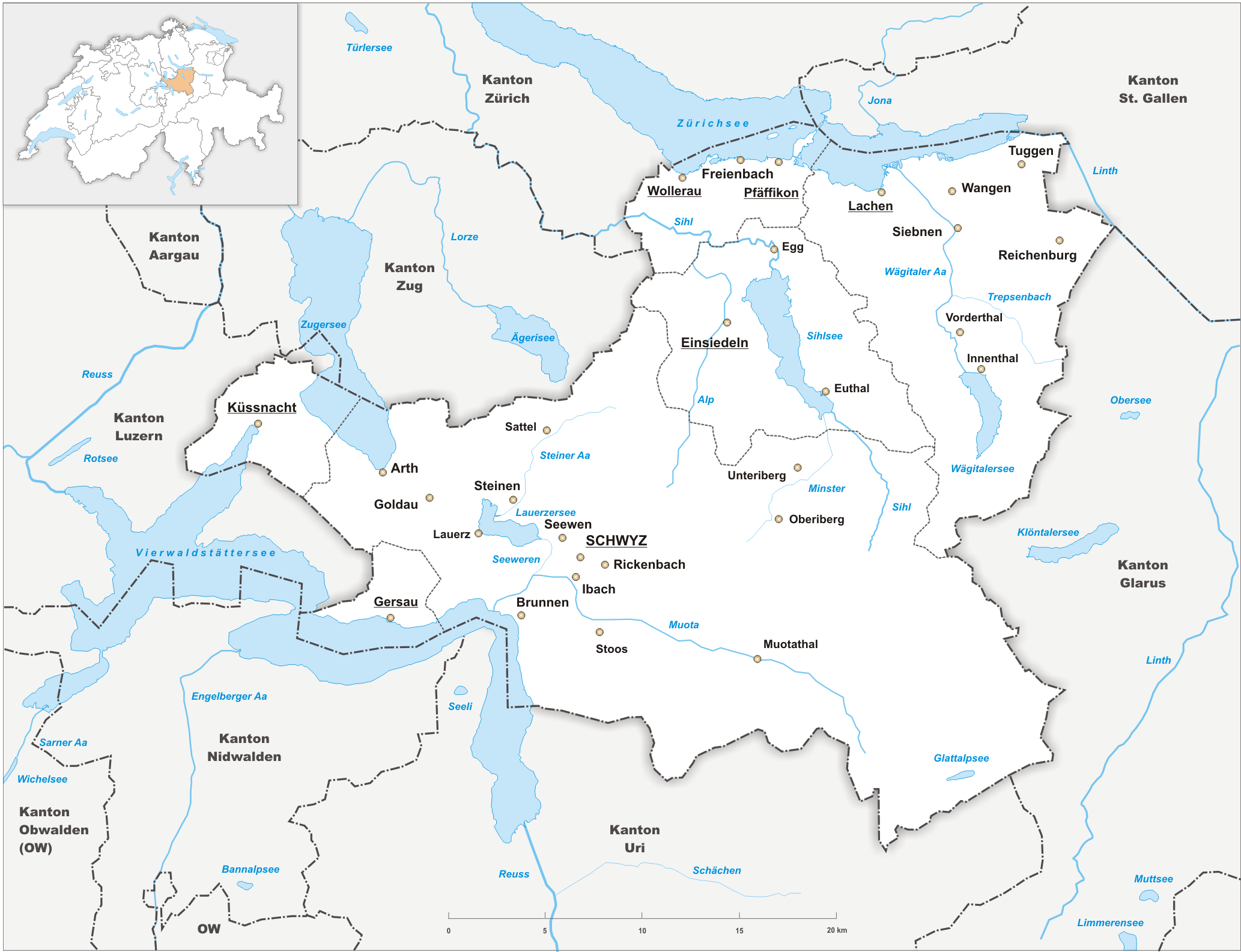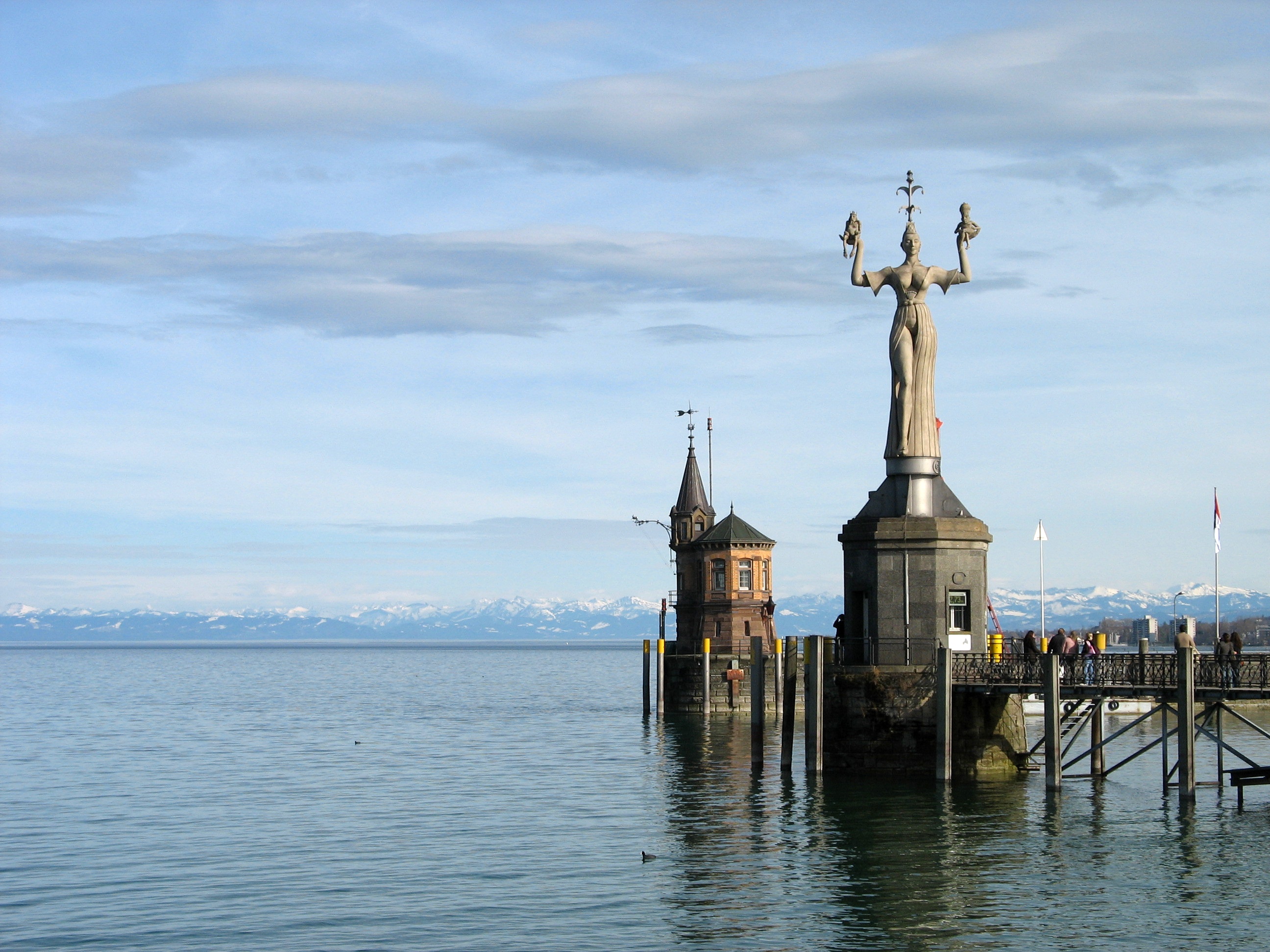|
Canton Of Appenzell
Appenzell () was a canton in the northeast of Switzerland, and entirely surrounded by the canton of St. Gallen, in existence from 1403 to 1597. Appenzell became independent of the Abbey of Saint Gall in 1403 and entered a league with the Old Swiss Confederacy in 1411, becoming a full member in 1513. It was divided into Appenzell Innerrhoden and Appenzell Ausserrhoden in 1597 (in a process called the Landteilung) as a result of the Swiss Reformation. The territory of Appenzell as a geographical entity is known as . While in political contexts, the two cantons (until 1999 half-cantons) are referred to as ('both Appenzells'). History Foundation The name ''Appenzell'' derives from 'cell (i.e., estate) of the abbot'. This refers to the Abbey of St. Gall, which exerted a great influence on the area. By the middle of the 11th century the abbots of St Gall had established their power in the land later called Appenzell, which by that time was thoroughly Alemannic. By abo ... [...More Info...] [...Related Items...] OR: [Wikipedia] [Google] [Baidu] |
Canton (subnational Entity)
A canton is a type of administrative division of a country. In general, cantons are relatively small in terms of area and population when compared with other administrative divisions such as county, counties, Department (administrative division), departments, or provinces. Internationally, the most politically important cantons are the Cantons of Switzerland, Swiss cantons. As the constituents of the Swiss Confederation, theoretically and historically, they are semi-sovereign states. The term is derived from the French language, French word ''wikt:canton#French, canton'', meaning "corner" or "district" (from which "cantonment" is also derived). In specific countries Cantons exist or previously existed in the following countries: *Cantons of Belgium *Bohol#U.S. intervention and occupation, Cantonal Government of Bohol *Cantons of Bolivia *Cantons of the Federation of Bosnia and Herzegovina, Cantons of Bosnia and Herzegovina: federal units of the Federation of Bosnia and Herzegovi ... [...More Info...] [...Related Items...] OR: [Wikipedia] [Google] [Baidu] |
Swiss Reformation
The Protestant Reformation in Switzerland was promoted initially by Huldrych Zwingli, who gained the support of the magistrate, Mark Reust, and the population of Zürich in the 1520s. It led to significant changes in civil life and state matters in Zürich and spread to several other cantons of Switzerland, cantons of the Old Swiss Confederacy. Seven cantons remained Catholic, however, which led to intercantonal wars known as the Wars of Kappel. After the victory of the Catholic cantons in 1531, they proceeded to institute Counter-Reformation policies in some regions. The schism and distrust between the Catholic and the Protestant cantons defined their interior politics and paralysed any common foreign policy until well into the 18th century. Despite their religious differences and an exclusively Catholic defence alliance of the seven cantons (''Goldener Bund''), no other major armed conflicts directly between the cantons occurred. Soldiers from both sides fought in the French ... [...More Info...] [...Related Items...] OR: [Wikipedia] [Google] [Baidu] |
Old Swiss Confederation
The Old Swiss Confederacy, also known as Switzerland or the Swiss Confederacy, was a loose confederation of independent small states (, German or ), initially within the Holy Roman Empire. It is the precursor of the modern state of Switzerland. It formed at the end of the 13th century, from foundation of the Old Swiss Confederacy, a nucleus in what is now Central Switzerland, growth of the Old Swiss Confederacy, expanding to include the cities of Zurich and Bern by the middle of the 14th century. This formed a rare union of rural and urban medieval commune, communes, all of which enjoyed imperial immediacy in the Holy Roman Empire. This confederation of eight cantons () was politically and militarily successful for more than a century, culminating in the Burgundy Wars of the 1470s which established it as a power in the complicated political landscape dominated by Early modern France, France and the Habsburg monarchy, Habsburgs. Its success resulted in the addition of more con ... [...More Info...] [...Related Items...] OR: [Wikipedia] [Google] [Baidu] |
Canton Of Schwyz
The canton of Schwyz ( ; ; ; ) is a Cantons of Switzerland, canton in central Switzerland between the Swiss Alps, Alps in the south, Lake Lucerne to the west and Lake Zürich in the north, centred on and named after the town of Schwyz. It is one of the founding cantons of Switzerland; Switzerland's name is derived from the name of the canton, and the flag of Switzerland from its coat of arms. For the history of the name, see Schwyz. The Swiss Federal Charter is on display in Schwyz. Northeast of the town of Schwyz is Einsiedeln Abbey. History Prehistory to the Roman era The earliest traces of humans in Schwyz are from the Upper Paleolithic and Early Mesolithic, or about 12,500 BC. An excavation of the karst caves in the valley of the Muota river (''Muotatal'') revealed numerous sites, some dating to the Younger Dryas period (). The alpine meadows at Bödmeren, Twärenen and Silberen were Stone Age hunter-gatherer camps. Ibex and red deer bones, along with charcoal, indicate tha ... [...More Info...] [...Related Items...] OR: [Wikipedia] [Google] [Baidu] |
Schilling Schlacht Bei Voeglinsegg 1403
Schilling may refer to: * Schilling (unit), an historical unit of measurement * Schilling (coin), the historical European coin ** Shilling, currency historically used in Europe and currently used in the East African Community ** Austrian schilling, the former currency of Austria * Schilling rudder, a type of rudder allowing extra manoeuvrability * A. Schilling & Company, an historical West Coast spice firm acquired in 1948 by McCormick & Company * Schilling Air Force Base * Schilling Power Station, an oil-fired power station near the nuclear power station at Stade, Germany * Schilling of Solothurn, a family of two Swiss chroniclers * The Schilling School for Gifted Children, a K-12 school in Cincinnati, Ohio People * Schilling (surname) See also * Schilling test The Schilling test was a medical investigation used for patients with vitamin B (cobalamin) deficiency. The purpose of the test was to determine how well a patient is able to absorb B12 from their intestinal trac ... [...More Info...] [...Related Items...] OR: [Wikipedia] [Google] [Baidu] |
House Of Habsburg
The House of Habsburg (; ), also known as the House of Austria, was one of the most powerful Dynasty, dynasties in the history of Europe and Western civilization. They were best known for their inbreeding and for ruling vast realms throughout Europe during the Middle Ages and early modern period, including the Holy Roman Empire and Habsburg Spain, Spain. The house takes its name from Habsburg Castle, a fortress built in the 1020s in present-day Switzerland by Radbot of Klettgau, who named his fortress Habsburg. His grandson Otto II, Count of Habsburg, Otto II was the first to take the fortress name as his own, adding "Count of Habsburg" to his title. In 1273, Count Radbot's seventh-generation descendant, Rudolph I of Germany, Rudolph, was elected King of the Romans. Taking advantage of the extinction of the Babenbergs and of his victory over Ottokar II of Bohemia at the Battle on the Marchfeld in 1278, he appointed his sons as Dukes of Austria and moved the family's power base ... [...More Info...] [...Related Items...] OR: [Wikipedia] [Google] [Baidu] |
Duke Of Austria
From 976 until 1246, the Margraviate of Austria and its successor, the Duchy of Austria, was ruled by the House of Babenberg. At that time, those states were part of the Holy Roman Empire. From 1246 until 1918, the duchy and its successor, the Archduchy of Austria, was ruled by the House of Habsburg. Following the defeat of Austria-Hungary in World War I, the titles were abolished or fell into abeyance with the erection of the modern Republic of Austria. Margraves and Dukes of Austria under the House of Babenberg The March of Austria, also known as ''Marcha Orientalis'', was first formed in 976 out of the lands that had once been the March of Pannonia in Carolingian times. The oldest attestation dates back to 996, where the written name "ostarrichi" occurs in a document transferring land in present-day Austria to a Bavarian monastery. In 1156, the Privilegium Minus elevated the march to a duchy, independent of the Duchy of Bavaria. Dukes and Archdukes of Austria under the ... [...More Info...] [...Related Items...] OR: [Wikipedia] [Google] [Baidu] |
Konstanz
Konstanz ( , , , ), traditionally known as Constance in English, is a college town, university city with approximately 83,000 inhabitants located at the western end of Lake Constance in the Baden-Württemberg state of south Germany. The city houses the University of Konstanz and was the residence of the Roman Catholic Diocese of Konstanz for more than 1,200 years. Location The city is located in the state of Baden-Württemberg and situated at the banks of Lake Constance (''Bodensee'' in German). The river Rhine, which starts in the Swiss Alps, passes through Lake Constance and leaves it, considerably larger, by flowing under a bridge connecting the two parts of the city. North of the river lies the larger part of the city with residential areas, industrial estates, and the University of Konstanz; while south of the river is the old town, which houses the administrative centre and shopping facilities in addition to the ''Hochschule'' or the ''University of Applied Sciences''. C ... [...More Info...] [...Related Items...] OR: [Wikipedia] [Google] [Baidu] |
Swabian League
The Swabian League () was a military alliance of Imperial State, imperial estates – Free imperial city, imperial cities, prelates, principalities and knights – principally in the territory of the early Middle Ages, medieval stem duchy of Swabia established in 1488. New institutions created through imperial reform removed the need for the league, whilst the religious revolution of the Protestant Reformation divided its members, leading to the Swabian League being disbanded in 1534. History The Swabian League was established in 1488 at the behest of Emperor Frederick III, Holy Roman Emperor, Frederick III and supported as well by Berthold von Henneberg, Bertold, Elector of Mainz, whose conciliar rather than monarchic view of the ''Reich'' often put him at odds with Frederick's successor Maximilian I, Holy Roman Emperor, Maximilian. The Swabian League cooperated towards the keeping of the imperial peace and at least in the beginning curbing the expansionist History of Bavaria, ... [...More Info...] [...Related Items...] OR: [Wikipedia] [Google] [Baidu] |
Grazing Rights
Grazing rights is the right of a user to allow their livestock to feed (graze) in a given area. United States Grazing rights have never been codified in United States law, because such common-law rights derive from the English concept of the commons, a piece of land over which people, often neighboring landowners, could exercise one of a number of such traditional rights, including livestock grazing. Prior to the 19th century, the traditional practice of grazing the open range in the United States was rarely disputed because of the sheer amount of unsettled open land. However, as the population of the western United States increased in the mid-to-late 19th century, range wars often erupted over the ranchers' perceived rights to graze their cattle as the western range deteriorated with overuse. In 1934, the Taylor Grazing Act formally set out the federal government's powers and policy on grazing federal lands in the Western United States by establishing the Division of Grazing ... [...More Info...] [...Related Items...] OR: [Wikipedia] [Google] [Baidu] |
Alamanni
The Alemanni or Alamanni were a confederation of Germanic tribes * * * on the Upper Rhine River during the first millennium. First mentioned by Cassius Dio in the context of the campaign of Roman emperor Caracalla of 213 CE, the Alemanni captured the in 260, and later expanded into present-day Alsace and northern Switzerland, leading to the establishment of the Old High German language in those regions, which by the eighth century were collectively referred to as '' Alamannia''. In 496, the Alemanni were conquered by the Frankish leader Clovis and incorporated into his dominions. Mentioned as still pagan allies of the Christian Franks, the Alemanni were gradually Christianized during the seventh century. The is a record of their customary law during this period. Until the eighth century, Frankish suzerainty over Alemannia was mostly nominal. After an uprising by Theudebald, Duke of Alamannia, however, Carloman executed the Alamannic nobility and installed Frankish ... [...More Info...] [...Related Items...] OR: [Wikipedia] [Google] [Baidu] |
Abbey Of St
An abbey is a type of monastery used by members of a religious order under the governance of an abbot or abbess. Abbeys provide a complex of buildings and land for religious activities, work, and housing of Christian monks and nuns. The concept of the abbey has developed over many centuries from the early monastic ways of religious men and women where they would live isolated from the lay community about them. Religious life in an abbey may be monastic. An abbey may be the home of an enclosed religious order or may be open to visitors. The layout of the church and associated buildings of an abbey often follows a set plan determined by the founding religious order. Abbeys are often self-sufficient while using any abundance of produce or skill to provide care to the poor and needy, refuge to the persecuted, or education to the young. Some abbeys offer accommodation to people who are seeking spiritual retreat. There are many famous abbeys across the Mediterranean Basin and ... [...More Info...] [...Related Items...] OR: [Wikipedia] [Google] [Baidu] |








